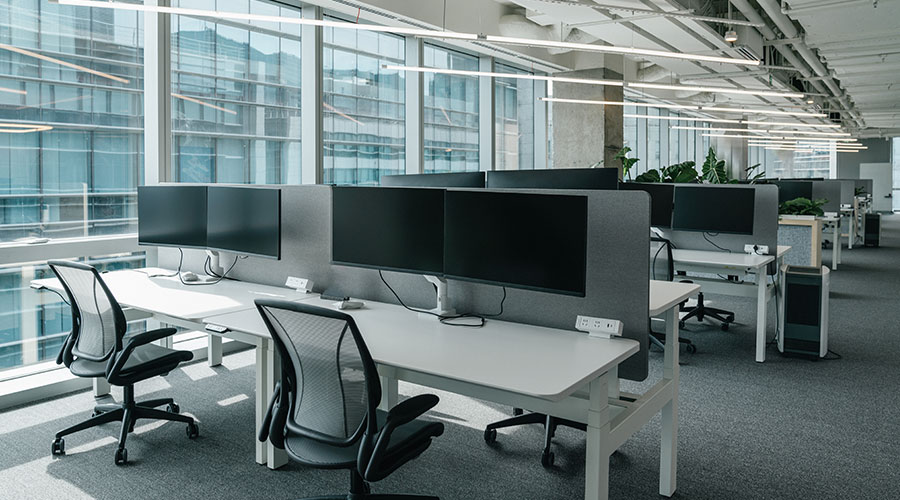Exceptionally Long Life Another Selling Point for LEDs
Another of LED lighting's main selling points is its potential to have exceptionally long life. LEDs contain no filament or glass, which makes them more durable than other kinds of lighting. What's more, their lifetime isn't affected by frequent on/off switching, and their "instant-on" capability means they don't need to warm up to reach maximum effectiveness. "A well-designed LED system can easily last more than a decade before requiring lamp replacement, greatly reducing maintenance costs," says Dave Ranieri, vice president and general manager, indoor, for Acuity Brands.
Additionally, LEDs do not fail abruptly in the same the way that incandescent, fluorescent or HID sources do. "For these traditional-lamp types, life is defined as the hours of operation after which 50 percent of a representative sample of lamps can be expected to fail," says Krepchin. "In contrast, most LEDs operate almost indefinitely, but their light output continually decreases, eventually reaching a point where not enough light is provided to satisfy the needs of the area being illuminated."
As a result, the industry has defined LED lamp life as the point where the light has degraded to a certain percentage of its initial output — typically 70 percent. On that basis, LED life is often 25,000 to 50,000 hours or more.
Information from DOE says most manufacturers of high-power white LEDs estimate lifetime around 30,000 hours to the 70 percent lumen maintenance level, assuming operation at 350 milliamps (mA) constant current and maintaining junction temperature at no higher than 90 degrees C. However, DOE also points out that manufacturers continue to improve LEDs' thermal robustness, allowing for higher drive currents and operating temperatures. The latest high-power white LED packages, according to DOE, claim a lifetime of 50,000 hours to the 70 percent lumen maintenance level when operated at 700 mA constant current or higher, even at maintained junction temperatures exceeding 100 degrees C.
One thing to bear in mind when assessing lamp longevity is that LED lighting is a young and still rapidly maturing technology, and some of these benefits in such a young technology can often include unforeseen challenges, says James Young, vice president of sales and marketing for WattStopper. For example, given the long life span of LEDs, "replacing LED fixtures eight, 10, 15 years ahead may be challenging in terms of direct replacement availability," he says. "Facility managers are accustomed to maintaining a modest supply of replacement components as well, while LED technology is not as modular as traditional lighting technologies. Facility managers will need to take many of these aspects into consideration."
When determining whether to specify LEDs, facility managers should determine priorities among a variety of factors — energy consumption, maintenance costs, security, appearance, and life-cycle costs versus first acquisition costs. "Prioritizing and communicating the end-goal to the lighting designer and manufacturer will allow them to provide the best lighting solution for the application," says Teresa Bair, marketing director, luminaires, at EYE Lighting International of North America.
"Because LEDs can be configured to be directional light sources, they can be used in applications where we have traditionally used incandescent and halogen directional lamps," says Susan Anderson, manager of energy relations for Osram Sylvania. "This feature also makes them good light sources at higher mounting heights where the light has to travel greater distances to reach the surface or the object being illuminated."
This directionality makes LEDs effective for such specialty applications as spotlights and retail accent lighting. It also is good for exterior applications because the light can be controlled in order to minimize light pollution and provide a more even light distribution.
"That evenness has helped LEDs save energy in street and area lighting applications, even if the absolute efficacy of the light source is not as high as the high-pressure sodium or metal halide lamps being replaced," Krepchin says. "The performance of LEDs also improves in cold temperatures, which has made them a good choice for things like refrigerated display cases in supermarkets and for cold storage warehouses. That feature is also another reason exterior applications have represented a good application for LEDs."
Additionally, because of their small size and the variety of configurations available, LEDs now can replace not just incandescent, halogen and CFL sources, but also linear fluorescent and HID sources in some applications, Anderson says. "Today you will find not just LED replacement lamps but dedicated LED luminaires, including downlight, track heads, 2x2 and 2x4 luminaires, industrial low- and high-bay luminaires, and a wide variety of outdoor luminaires," she says.
Related Topics:















